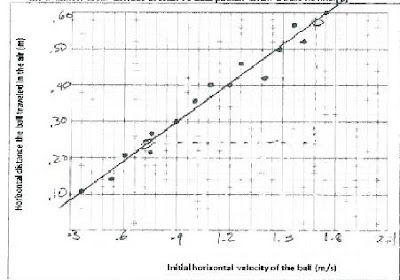The 2004 AP Physics B exam includes a clever problem combining kinematics and static fluids. That's problem 2, linked here. I assigned this problem on my trimester exam, and got reasonably good results.
Anytime you're teaching a class of 37 students, though, you're going to have frustrations grading their exams. SOMEONE is going to make the silly mistake you warned them about a million times. Someone, somewhere, is going to lose five points out of fifteen because they didn't think properly under pressure, even though that same person will later slap his head and say "d'oh!"
I make my students correct their mistakes on all tests and exams. The corrections process is not only pedagogically sound, it is cathartic to the physics teacher's soul, as well. Some of the questions I ask on corrections are to point out the most common misconceptions, so that students can eliminate said misconceptions from their brains. Other questions are designed less as a teaching tool than as a deterrent to future silliness. When I grade the exams, and I scream to an empty room, "How can you fail to put units on an answer after three months of AP Physics?!!!!!" I find that I feel much better by designing a "deterrent" style test correction. Here's what I mean.
Part (a) of 2004 B2 asked students to find the gauge pressure at the bottom of the ocean, given an absolute pressure of 413 atmospheres. Those who missed this question usually couldn't recall the meaning of "gauge pressure." So, the correction is pretty simple:
(a) Don't solve, just tell me briefly what is the difference between gauge and absolute pressure.
Part (b) required students to use the absolute pressure and the equation for pressure in a static fluid column to find the depth of the sunken ocean liner. The most common mistake was to fail to convert properly from atmospheres to pascals. That's not a huge deal to me. Of greater consequence are the numerous students who get an answer of 41 m for the depth of the ocean, and don't recognize why that's so silly. (The ocean liner itself is probably longer than that!) So all I ask is:
(b) Explain in no more than two sentences why the answer “41 m” is physically unreasonable.
But the other major problem with parts (a) and (b), and with ALL parts of this question, is the students who write down 8 significant digits, or who fail to put units on their answers. My students certainly know how to use proper sig figs, and they have been called out numerous times for lack of units. On an exam, units and signifcant figures are a matter of focus, not of true understanding. So, here's the correction I use. Imagine reading this correction with an evil cackle:
If you lost points for units or significant figures here, or anywhere in this problem, write out in your own handwriting: “From now on I will be sure to write units on every numerical answer, and I will limit my answer to two or three significant figures unless the problem requires more significant figures. And, the value “41,205,100 Pa” has six significant figures, which is too many.”
Ah, I feel better now. And it works -- I've heard students saying to one another, "Hey, don't worry, I had to write that after our earlier test, and I made sure to put units on every answer this time."
The only other additional question I ask students in correcting this problem is in the last part, which asks for the time for the ocean liner to fall to the bottom. Some students set up a single kinematics chart, with an initial velocity of 0 m/s, a final velocity of 10 m/s, and a distance equal to the depth of the ocean. Problem is, they were told that 10 m/s is the terminal velocity of the ocean liner, which was reached after falling for 30 s. So it's a two-step problem -- find how far the liner falls in the first 30 s while it's accelerating, then use constant-speed kinematics to find the time to fall the rest of the way. I ask students to re-solve this problem, but first, they answer:
To find the time of sinking, why can’t you just make a kinematics chart with vo = 0, a = 0.3 m/s2, and Dx = 4200 m?
The goal, of course, is for students who got a part wrong to figure out their mistakes. Just asking students to redo the same questions without acknowledging their misconceptions or articulating in words their mistakes is, while better than NOT doing corrections, insufficient. These kinds of additional questions make corrections engaging and effective.









